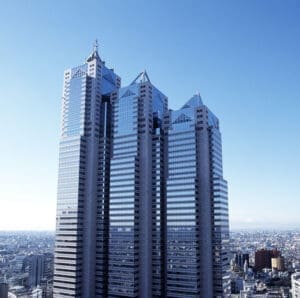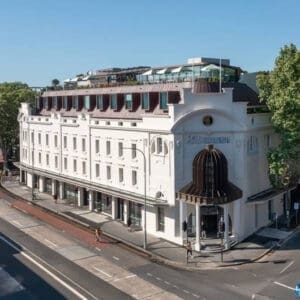 If, after a guest checks into his or her room at theÊAloft Boston Seaport Hotel, something isn’t quite rightÑthe heat needs to be cranked up or a light dimmedÑthere’s no need to call the front desk or even move. The world’s first voice-activated hotel room takes voice commands. Powered through an in-room iPad, Project Jetson employs a custom app and HomeKit-enabled accessories.
If, after a guest checks into his or her room at theÊAloft Boston Seaport Hotel, something isn’t quite rightÑthe heat needs to be cranked up or a light dimmedÑthere’s no need to call the front desk or even move. The world’s first voice-activated hotel room takes voice commands. Powered through an in-room iPad, Project Jetson employs a custom app and HomeKit-enabled accessories.
On a smaller scale, Virgin Hotels Chicago’s customized app gives guests total control of their accommodations. Called LucyÑand with a moniker of Òyour personal comfort assistantÓÑit can order roomservice, act as a concierge for goings-on in the neighborhood and adjust the room’s temperature.
Incorporating technology often comes with an accusation that human contact is being replaced. Not so, said Flo Lugli, founder and principal of Navesink Advisory Group, a travel-industry consulting group in Fountain Hills, Ariz. ÒThere are areas where technology can replace a personal connection and the end result is very positive,Ó said Ms Lugli. ÒIt can totally be the guest’s choice if he uses the technology or not.Ó One example, she said, is paying a dinner bill via an iPad already at the table: ÒWhen a personal interaction doesn’t add any value to a guest, then technology can actually provide a better experience.Ó
It’s that kind of innovation thatÊMarriott International rolled out at AC Hotels recently: a buzzer-like device called kallpod technology in food-and-beverage areas. GM Dennis Clark knew right away it would be a hit as he prepared to open AC Hotel Madison in Madison, Wis., in May. ÒIf [guests] want something, all they have to do is push a button,Ó he said. This has led to faster table-turns and higher revenue. It also saves wait staff a trip to inquire about whether or not to bring the check.
Mr Clark didn’t anticipate that the technology would coax conversation between guests and wait staff. ÒIt’s a talking point,” he said.Ê”It actually opens up the door for more dialogue. Anything that you can do to engage the guest, the better it is.Ó
Another example of human interaction not as vital to the guest’s experience is in the booking process. In May, The Venetian Las Vegas began taking bookings over Facebook Messenger, one of the first hotels to do so. This gives future guests the ability to book a stay from their smartphones or tablets, which is especially valuable for on-the-go business travelers.
Riffing off of social-media innovation shows guests that a hotel is up on trends. Launched this year, complementary usage of Snapchat Spectacles for guests at Acme Hotel in Chicago and Hotel El Paseo in Miami Beach, Fla., helps attract a younger audience. A quick press of the button and video content is directly loaded into the user’s Snapchat account.
Fueling engagement
But first, hotels have to grab the attention of potential guestsÑoften through technology. While videos and photos used to draw customers in, virtual-reality marketing, or guided 3D video, is now king. In May of 2016,ÊBest Western Hotels & ResortsÊlaunched virtual-reality tours for each of its 2,100 hotels in the United States and Canada, in perfect pitch with Òa [$2 billion] brand refresh,Ó said Dorothy Dowling, the brand’s senior VP and chief marketing officer. Best Western worked with Google Street View to create the product, consisting of 1.7 million photos. Tours can be accessed through Best Western’s YouTube channel.
Like Mr Clark, Dowling thinks technology should further engage the customer. ÒTo be able to bring fun to people in the form of experience is critically important today,Ó she said. ÒIt allows the customer to drive the bus, so to speak. They get to move through the experience.Ó Adding Òa level of transparency and clarity between offeringsÓ at each property through virtual reality became Òa part of our marketing mix to be able to tell our story,Ó said Ms Dowling.
Renaissance New York Midtown Hotel worked with YouVisit.com to launch virtual-reality tours in April. It works best when linked with a narrative, which, for Renaissance New York Midtown Hotel, is Òforward-thinking, technology-friendly,Ó said Gordon Meyer, YouVisit.com’s Head of Marketing. ÒThere’s an immediate sense of trust when any view can click into a 3D environment.Ó Average viewing time is 10.4 minutes, said Meyer, and hotels enjoy a 12.3-percent conversion rate. ÒThe average time spent on a website is two minutes. Not only are they entertained [with virtual reality], they’re very deeply engaged.”















